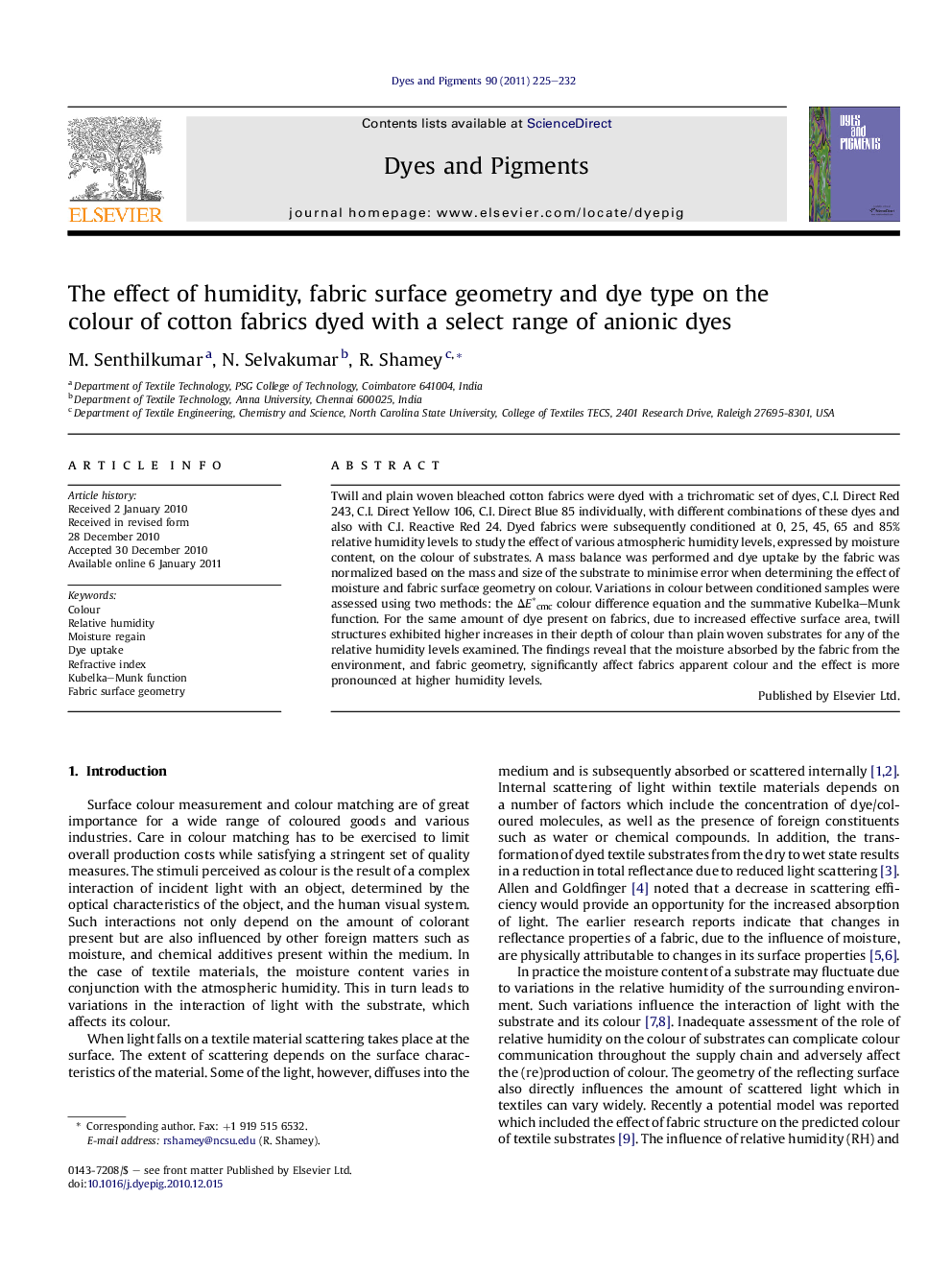| Article ID | Journal | Published Year | Pages | File Type |
|---|---|---|---|---|
| 177088 | Dyes and Pigments | 2011 | 8 Pages |
Twill and plain woven bleached cotton fabrics were dyed with a trichromatic set of dyes, C.I. Direct Red 243, C.I. Direct Yellow 106, C.I. Direct Blue 85 individually, with different combinations of these dyes and also with C.I. Reactive Red 24. Dyed fabrics were subsequently conditioned at 0, 25, 45, 65 and 85% relative humidity levels to study the effect of various atmospheric humidity levels, expressed by moisture content, on the colour of substrates. A mass balance was performed and dye uptake by the fabric was normalized based on the mass and size of the substrate to minimise error when determining the effect of moisture and fabric surface geometry on colour. Variations in colour between conditioned samples were assessed using two methods: the ΔE∗cmc colour difference equation and the summative Kubelka–Munk function. For the same amount of dye present on fabrics, due to increased effective surface area, twill structures exhibited higher increases in their depth of colour than plain woven substrates for any of the relative humidity levels examined. The findings reveal that the moisture absorbed by the fabric from the environment, and fabric geometry, significantly affect fabrics apparent colour and the effect is more pronounced at higher humidity levels.
Research highlights► Studies pertaining to the effect of bound water on colour measurement of substrates with different surface characteristics have not been previously reported. In the case of cotton this amounts to up to 19% bound water content and the results indicate that this significantly affects the measurement of colour. ► The article details a study examining the role of fabric surface geometry as well as humidity on the colour of a range of direct dyed cotton substrates. The reported model assesses the role of fabric surface geometry for plain and twill structures as an example of the role of increased surface area on the measured colour of the substrate. ► Although the amount of dye on fabrics was normalized for various woven structures examined, it was shown that fabric geometry affects the measured depth of shade. Indeed the two twill fabrics studied exhibited higher increases in their depth of colour than plain woven substrates for any of the relative humidity levels examined. In addition, a reactive dye was applied at different depths of shade to examine the validity of results obtained for direct dyes which confirm the results from those experiments. Therefore, due importance should be given to the relative humidity of the atmosphere while measuring the colour of dyed hydrophilic substrates.
